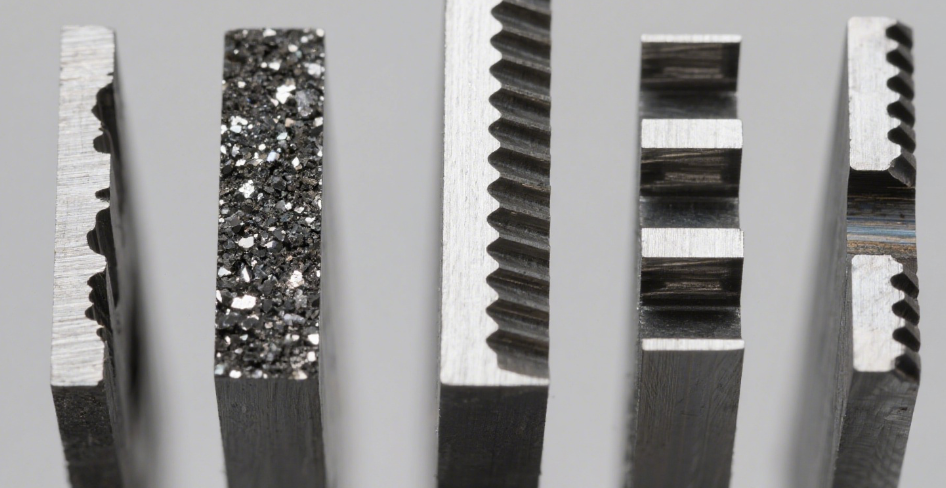Table of Contents
Introduction

Tool steel is an essential material in modern manufacturing, widely used in applications that demand exceptional hardness, wear resistance, and the ability to retain shape at elevated temperatures. Despite its critical role in industries like automotive, aerospace, energy, and precision tooling, there are many misconceptions surrounding this material. These myths can lead to costly mistakes in selection, processing, and application.
This article explores five of the most dangerous myths about tool steel, debunks them with factual insights, and provides practical guidance for engineers, manufacturers, and decision-makers. By addressing these misconceptions, businesses can avoid inefficiencies and maximize the performance and longevity of their tools.
Myth 1: All Tool Steels Are the Same
One of the most common misconceptions is that all grades of tool steel offer similar properties. In reality, there are multiple families of tool steel, such as water-hardening, cold-work, hot-work, shock-resistant, and high-speed steels, each tailored for different applications.
For example, cold-work grades are ideal for cutting and stamping at lower temperatures, while hot-work types are specifically engineered for thermal shock resistance in die casting and forging. High-speed grades retain hardness even when tools reach extreme temperatures during machining. Assuming that all tool steels are interchangeable can lead to premature failure, reduced efficiency, and higher costs.
Key distinctions between different types include:
- Water-hardening steels: Affordable, good for simple tools, but limited in high-temperature resistance.
- Cold-work steels: Excellent for wear resistance in stamping, blanking, and shearing operations.
- Hot-work steels: Designed to withstand heat and thermal cycling, critical for forging and die casting.
- Shock-resistant steels: Capable of absorbing impact loads, commonly used in chisels and punches.
- High-speed steels: Retain hardness at elevated temperatures, ideal for cutting tools like drills and mills.
Failing to recognize these differences often leads to:
- Misapplication of the material.
- Excessive wear and shortened tool life.
- Increased replacement and labor costs.
Myth 2: Tool Steel Never Requires Heat Treatment

Another dangerous belief is that tool steel performs optimally without heat treatment. In truth, heat treatment is a vital step that enhances hardness, toughness, and dimensional stability. Without this process, the steel may not reach its intended mechanical performance.
Heat treatment processes include:
- Annealing: Softens steel for easier machining and reduces internal stresses.
- Quenching: Rapidly cools steel to increase hardness.
- Tempering: Reduces brittleness and balances toughness with hardness.
Problems caused by neglecting proper heat treatment:
- Tools that chip or crack under load.
- Unpredictable dimensional changes during service.
- Reduced wear resistance and shorter lifespan.
This myth often arises from oversimplifying metallurgy or assuming that “as-supplied” steel already has the required properties. In reality, custom heat treatment is often the step that transforms tool steel into a high-performance material.
Myth 3: Tool Steel Is Too Expensive for Practical Use

Some manufacturers avoid tool steel because they believe it is prohibitively expensive. While the upfront cost may be higher than other steels, its long-term benefits outweigh the investment. Tool steel reduces downtime, decreases replacement frequency, and improves machining efficiency.
Ways in which tool steel actually saves money:
- Longer tool life: Reduced frequency of replacement.
- Less downtime: Minimizes interruptions in production.
- Improved efficiency: Better cutting speeds and performance.
- Lower scrap rates: Higher precision reduces material waste.
In cost-per-part analysis, using tool steel often proves more economical than cheaper alternatives. The initial expense is balanced by:
- Lower maintenance costs.
- Extended service intervals.
- Higher productivity and consistent quality output.
Believing it is too expensive can prevent companies from capitalizing on these long-term gains, leaving them trapped in a cycle of frequent tool replacement and hidden costs.
Myth 4: Tool Steel Works the Same in All Environments

Tool steel does not perform uniformly across every working condition. Different grades are designed for specific stress factors such as temperature, wear, and impact. Using the wrong grade in the wrong application is a recipe for failure.
For instance, hot-work steel in cold stamping may be unnecessarily expensive, while cold-work grades in die-casting molds will fail rapidly under thermal fatigue. Each environment demands a carefully selected material that balances toughness, wear resistance, and heat stability.
Factors to consider when selecting tool steel:
- Operating temperature range.
- Type of mechanical load (impact, wear, continuous stress).
- Corrosive or abrasive environment.
- Desired tool life versus initial cost.
Consequences of poor selection include:
- Cracking under thermal shock.
- Excessive wear in abrasive environments.
- Rapid tool degradation, leading to downtime.
Choosing the correct grade requires not only knowledge of tool steel properties but also a detailed understanding of the intended working conditions.
Myth 5: Tool Steel Does Not Require Proper Maintenance

Another misconception is that tool steel tools last indefinitely without maintenance. Even with excellent properties, regular inspection, lubrication, and controlled operating conditions are essential. Proper maintenance not only extends service life but also ensures safety and efficiency in production.
Best practices for maintaining tool steel:
- Routine inspection: Identify early signs of cracking or wear.
- Lubrication: Prevents overheating and reduces friction.
- Re-grinding: Restores cutting edges and maintains efficiency.
- Surface treatments: Such as coating or nitriding for extended wear resistance.
Consequences of ignoring maintenance:
- Sudden tool breakage during operation.
- Increased downtime and production delays.
- Safety risks for operators and equipment.
- Higher costs due to unplanned tool replacement.
Preventive care ensures consistent performance, reliability, and safety, making maintenance a non-negotiable aspect of using tool steel effectively.
Comparative Table: Tool Steel Types and Applications
| Type of Tool Steel | Key Properties | Common Applications |
|---|---|---|
| Water-Hardening | High hardness, limited heat resistance | Hand tools, simple cutting instruments |
| Cold-Work | Wear resistance, toughness at low temps | Stamping dies, blanking tools, punches |
| Hot-Work | Thermal shock resistance, toughness | Die casting, extrusion, forging dies |
| Shock-Resistant | High impact resistance | Chisels, shear blades, hammers |
| High-Speed | Hardness at high temperatures | Drill bits, milling cutters, saw blades |
This comparison shows that choosing the correct tool steel is not just about cost, but about aligning the grade with its application environment.
Conclusion
The myths surrounding tool steel can create confusion and lead to poor decision-making in manufacturing. Believing that all types are the same, skipping heat treatment, or dismissing maintenance are practices that jeopardize efficiency and safety. By recognizing the differences among grades, understanding the importance of heat treatment, and committing to preventive care, manufacturers can fully harness the potential of tool steel.
Far from being prohibitively expensive or universally applicable, this material is a highly specialized solution that drives productivity, safety, and quality in industries worldwide.
FAQ
Q1: What are the main types of tool steel?
The main categories include water-hardening, cold-work, hot-work, shock-resistant, and high-speed steels. Each type is engineered for specific industrial applications—for example, cold-work steels excel in stamping and shearing at room temperature, while hot-work steels are ideal for die casting and forging. Understanding these distinctions ensures the right material is chosen for optimal performance.
Q2: Why is heat treatment necessary for tool steel?
Heat treatment is a critical step that transforms the internal structure of tool steel, enhancing hardness, toughness, and wear resistance. Without it, the steel may remain too soft or brittle, failing to meet the demands of cutting, forming, or machining. Properly applied heat treatment ensures tools achieve consistent and reliable performance.
Q3: Is tool steel always more expensive than other steels?
Although the upfront price of tool steel is typically higher than standard steels, its long-term advantages make it a cost-effective choice. By reducing downtime, extending tool life, and improving production efficiency, tool steel lowers overall operating costs. Over time, the savings from fewer replacements and less scrap often outweigh the initial investment.
Q4: How do I choose the right tool steel for my application?
Selection depends on working conditions such as temperature, wear, and impact. Consulting engineering data and supplier recommendations ensures proper material choice.
Q5: Can tool steel be used for high-temperature applications?
Yes, hot-work and high-speed grades are specifically designed to maintain hardness and toughness at elevated temperatures.
Q6: What industries benefit most from tool steel?
Industries such as automotive, aerospace, energy, and tooling benefit due to its ability to withstand stress, heat, and wear in demanding applications.
Q7: Does tool steel require regular maintenance?
Yes, maintenance like cleaning, lubrication, and re-grinding is essential to maximize tool life and prevent unexpected failures.
Q8: Can tool steel be recycled?
Tool steel is fully recyclable, and scrap pieces can be melted down and reprocessed into new materials. This recyclability contributes to more sustainable manufacturing practices and reduces overall environmental impact. Recycling also lowers material costs by allowing steel to re-enter the supply chain.
Q9: What are the consequences of using the wrong grade?
Using an unsuitable grade can lead to tool breakage, reduced productivity, excessive wear, and increased operational costs.
Q10: How does tool steel compare to stainless steel?
While stainless steel excels in corrosion resistance, tool steel offers superior hardness and wear resistance, making it better suited for cutting and forming applications.
✨ Let’s Stay Connected!

If you enjoyed this blog on mechanical parts processing, don’t forget to join me on social media for more insights, updates, and community discussions.
📘 Facebook – Connect with me here
Let’s keep exploring, learning, and growing together. Thanks for reading, and see you in the next post! 🚀

